Surya Namaskar | Sun Salutation: Health benefits, How to do? variations
What is Surya Namaskar ?
Surya namaskar was also known as a sun salutation in English. Sun Salutation or Salute to the Sun is a practice in yoga as exercise including a flow sequence of some twelve gracefully linked asanas.
The asana sequence was first listed as yoga in the early 20th century, though similar exercises were in use in India before that, for example among wrestlers. The basic sequence includes moving from a standing position into Downward and Upward Dog poses and then returning to the standing position, but many variations are possible. The set of 12 asanas is devoted to the Hindu solar deity Surya. In some Indian traditions, the poses are each associated with a different mantra.
The exact origins of the Sun Salutation are uncertain, but the sequence was made famous in the early 20th century by Bhawanrao Shriniwasrao Pant Pratinidhi, the Rajah of Aundh, and embraced into yoga by Krishnamacharya in the Mysore Palace, where the Sun Salutation classes, not then considered to be yoga, were held next door to his yoga sala. Pioneering yoga teachers educated by Krishnamacharya, involving Pattabhi Jois and B. K. S. Iyengar, taught changes between asanas derived from the Sun Salutation to their students worldwide.
Surya Namaskar or Sun Salutation is a sequence of 12 powerful yoga positions. Besides being a good cardiovascular workout, Surya Namaskar is also known to have a tremendously positive impact on the body and mind.
Practicing Surya Namaskar poses is best done early morning on an empty stomach. Each round of Sun Salutation includes two sets, and every set is composed of 12 yoga poses.
Besides better health, Surya Namaskar also gives an opportunity to express gratitude to the sun for sustaining life on this planet.
There are 12 mantras that go along with the Surya namaskar postures, which praise the different features of the Sun God or Surya. When Surya namaskar is done with the chant of mantras, there is a spiritual effect giving overall well-being. One can chant them out aloud or in the mind while doing Surya namaskar. below are the mantras :
- Om Mitraaya namahaa
- Om Ravaye namahaa
- Om Suryaaya namaha
- Om Bhaanave namahaa
- Om Khagaaya namahaa
- Om Pushane namahaa
- Om Hiranyagarbhaaya namahaa
- Om Marichye namahaa
- Om Aadityaaya namahaa
- Om Savitre namahaa
- Om Akaarye namahaa
- Om Bhaaskaraaya namahaa
- Om Sri Savitru Surya Naaraayanaaya namahaa
Which muscles use during Surya namaskar poses?
The muscle activation pattern in key accessible muscles of the trunk and lower extremity, namely lower trapezius, erector spinae, latissimus dorsi, rectus abdominis, gluteus maximus, vastus lateralis, and gastrocnemius, was examined during the traditional 12-pose sequence of Surya Namaskar.
What are the Health benefits of doing Surya namaskar?
There are a plethora of advantages of Surya Namaskar. Here are a few Surya Namaskar asana advantages that help you to enhance your overall health.
- Help in decreasing belly fat due to asanas like Hasta Uttanasana (raised arm pose), Bhujanagasana (cobra pose), and Dandasana (plank pose).
- Stimulates thyroid glands and produces hormone secretions.
- It increases blood circulation throughout the body, thus improving skin.
- Hair growth and glowing skin due to improved blood circulation.
- It prevents wrinkles by decreasing stress.
- Surya namaskar unites every body part, thus stimulating them and also wasting away around all the body parts.
- It strengthens the heart and increases cardiovascular functioning.
- Tones digestive tract by restoring abdominal muscles and curing constipation.
- Stimulate the lymphatic system thus increasing immunity and also waste removal.
- Stimulates spinal nerves, which increases their functions such as motor, sensory, etc.
- Surya namaskar asanas include the spine, neck, shoulder, wrist, leg, arms, and back muscles which increases flexibility and also releases stress from these muscles.
- It interconnects your body, breath, and mind thus improving your awareness and giving calmness to your mind.
- It increases concentration and builds endurance to stress.
- Decreases uterus and any menstrual disorders such as PCOS.
- Also restores kidney functioning and also to decreases any kidney-related ailments.
- Mental health benefits
Exercise has mental health benefits. it increases self-confidence and helps to gain self-discipline. It calms the nervous system and consistent exercise can contribute to managing anxiety, insomnia, and depression.
What are the Preparatory Guidelines for Surya Namaskar?
Surya Namaskar is the most practiced chain in yoga. In order to practice it perfectly and for maximum benefits, keep these preparatory points in mind;
- Before you start Surya namaskar practice, a few rounds of gentle warm-up stretches are the best idea to open joint & muscle motion. However, in itself, Surya Namaskar is done as a warm-up exercise before asana & pranayama.
- When performing sun salutation in the morning (ideally), face towards the sunrise in the east direction. While in the evening, do it facing towards the west.
- While doing Surya namaskar, make sure everybody’s motion is synchronizing with breathing in & out. Inhale in positions you stretch up and exhale in positions you flex forward or gaze down.
- If sun salutation is your stand-alone exercise, keep enough time to end this exercise in a relaxation pose like Shavasana.
- Do 1st set of Surya Namaskar at a slow speed. Slowly raise the speed in consecutive rounds.
- One set of Surya Namaskar includes 2 rounds of 12 yoga poses. In the first round, the 4th pose of the chain (Ashwa Sanchalanasana) is done by stepping the right leg forward while in the second round, Ashwa Sanchalanasana is done by stepping the left leg forward. This way, 1 set of Surya Namaskar conveys 24 yoga poses.
- In general, 12 sets of Surya Namaskar are performed at the start of a yoga session. In this way, a practitioner does 288 yoga poses (21212) in a single sun salutation session.
What are the 12 poses of Surya Namaskar?
Follow the step-by-step commands below to practice 12 poses of Surya namaskar with breathing and mantra chanting :
- Pranamasana (Prayer pose)
- Hasta Utthanasana (Raised arms pose)
- Padahastasana (Standing forward bend)
- Ashwa Sanchalanasana (Equestrian pose)
- Chaturanga Dandasana (Four-limb pose)
- Ashtanga Namaskar (Eight Limbed pose)
- Bhujangasana (Cobra pose)
- Adho Mukha Svanasana (Downward-Facing Dog)
- Ashwa Sanchalanasana (Equestrian pose)
- Padahastasana (Standing forward bend)
- Hasta Utthanasana (Raised arms pose)
- Pranamasana (Prayer pose)
Pranamasana (Prayer pose)
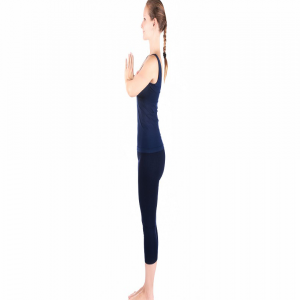
Stand upright drawing the feet together and arms by your sides.
Slowly flex your elbows to join your palms in a Namaskar Mudra in front of the chest.
Close your eyes, relax the whole body, and continue breathing normally.
Keep your concentration around the chest on Anahata Chakra and chant “Om Mitraya Namaha“.
Benefits of Pranamasana:
Relaxes the nervous system and assists in maintaining body balance.
It also helps reduce stress and anxiety.
TIP: Remember to keep your back erect at all times to prevent putting pressure on your lower back.
Hasta Utthanasana (Raised arms pose)
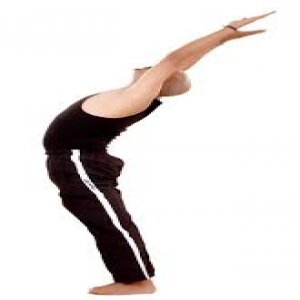
After breathing out deeply in the prayer pose, breathe in – separating the hands lifting, and stretching the arms over the head.
Breathe in, look up and fold the body slightly backward and push the pelvis forward.
Draw the arms shoulder-width apart.
You can feel the stretch in the belly and enlargement of the lungs.
Chant Om Ravaye Namaha, while performing hasta utthanasana.
Benefits of Hasta Uttanasana:
Stretches and tones your abdominal muscles.
Advantageous for people suffering from asthma, lower back pain, and fatigue.
It also assists digestion.
TIP: To feel a perfect stretch, push your heels down on the ground while reaching high for the roof with your hands.
Padahastasana (Standing forward bend)
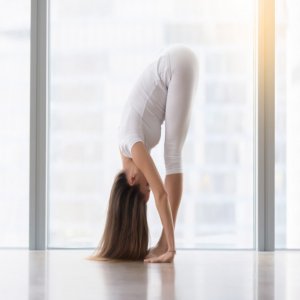
Exhale and bend forward from the hips placing the palms on the ground on either side of the feet.
Try to draw the head as close as possible to the knees.
The chest rests against your thighs holding this position.
This is done while chanting, “Om Suryaya Namaha.”
Benefits of Padahastasana:
Padahastasana stretches the spine and makes it flexible.
It strengthens the thighs, knees, and calves.
It even reduces anxiety, stress, and headaches.
This position has therapeutic action on insomnia and osteoporosis.
It stimulates the Sacral chakra and increases the creative side of the practitioner as well as brings in pleasure.
It is also advantageous for the digestive and reproductive systems.
TIP: The goal is not to touch the ground with your palms, it is to keep your back erect no matter how to lower your bend.
Ashwa Sanchalanasana (Equestrian pose)
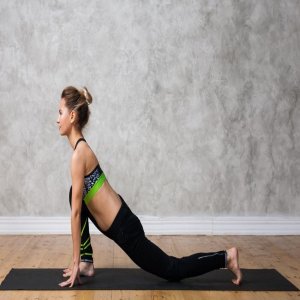
Breathe in, place the right leg back pushing the foot as far as possible, placing the knee on the ground with tucked-in toes.
Flex the left knee to place the foot on the ground.
Press the palms or fingertips by the sides of the left foot on the ground.
Arch the back and tilt the head backward raising the chin to look up.
Here, chant Om Bhanave Namaha.
Benefits of Ashwa Sanchalanasana:
Ashwa Sanchalanasana increases the strength of the legs and spine.
It enhances lung capacity and increases the respiratory system.
On the energetic level, it efforts on Ajna Chakra and advances brain capacity.
It is a cure for constipation, indigestion, and sciatica.
Tips :
Keep your internal concentration on the eyebrow center.
While taking the pose, the hips are pressed downward.
The body weight is equally shared among both the hands, left foot, right knee, and toes of the right foot.
Chaturanga Dandasana (Four-limb pose)
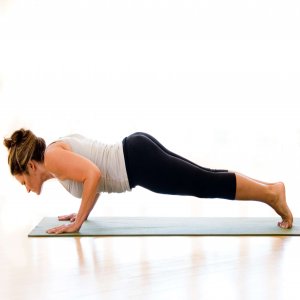
Inhale moves the left foot backward placing it beside the right.
Breathe out curling the toes in and pressing the hands on the ground lowering the chest closer to the ground.
Balance the whole body on the toes and hands.
Benefits of Chaturanga Dandasana :
This posture concentrates on strengthening the core muscles and tones the abdominal muscles.
It strengthens the shoulders, arms, and wrists.
Chaturanga dandasana also aids improve posture as the spinal muscles also gain strength.
The core muscles are actively engaged in holding this posture that assists in burning the abdominal fat.
Tip:
Maintain the shoulders stacked over the wrists.
The shoulders must persist relaxed and pulled away from the neck and head.
While lowering the upper body, align the hips and shoulders in the same plane.
Ashtanga Namaskar (Eight Limbed pose)
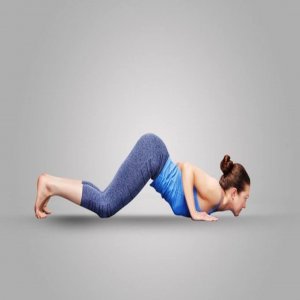
Exhale and lower the knees to the ground and take your hips slightly backward.
Slide a little forward putting the chest and chin on the ground.
Therefore, only the toes, knees, chest, chin, and hands touch the ground.
The buttocks, hips, and abdomen are kept lifted.
It is performed by chanting, Om Pushne Namaha.
Benefits of Ashtanga Namaskar:
It strengthens the legs and arms muscles.
This stimulates the Manipura Chakra.
This pose also reduces digestive ailments.
TIP: This pose helps reduce anxiety and stress and strengthens your back muscles.
Bhujangasana (Cobra pose)

Breath in, lower the hips, point the toes back, and slide the chest forward.
Arch the back rolling the shoulders downwards.
Slowly look up like the cobra lifts its hood.
Chant Om Pushne Namaha during the performance.
Benefits of Bhujangasana:
It increases blood circulation.
This pose stretches the shoulders, back, chest, and legs muscles.
It increases the flexibility of the spine.
It stimulates the sacral chakra.
This reduces menstrual pain, backache, and sciatica.
Tips :
Do not lock the elbows while lifting the upper body and arching the back.
Keep the elbows slightly flexed and squeeze them together to the backward.
The raised trunk is supported with the help of the arms.
Only the thighs and hips remain in contact with the ground.
Adho Mukha Svanasana (Downward-Facing Dog)
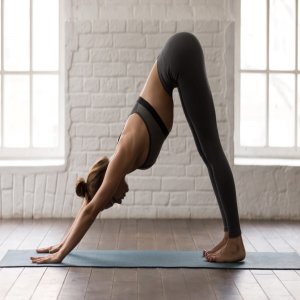
Exhaling raises the hips and pushes them back to place the heels on the ground and straighten the arms.
Drop the head between the arms, making an inverted V with the legs, arms, and back.
Press the palms and heels on the ground, and take a few breaths.
Chant Om Khagaya Namaha, during this position.
Benefits of Adho Mukha Svanasana:
It stimulates the vishuddhi chakra.
This inverted pose gives oxygenated blood to the brain and calms the mind.
It also improves body posture and aids in increasing height.
Tips: It is okay if your heels don’t touch the ground completely.
Ashwa Sanchalanasana (Equestrian pose)

Breathe in to draw the right forward between the hands flexing the knee.
Simultaneously, lower the left knee to touch the ground, tuck the left toes in, and push the pelvis forward.
Tilt the head back to look up as in pose 4 reciting, “Om Adityaya Namaha.”
Benefits of Ashwa Sanchalanasana :
It gives flexibility to leg muscles and tones the abdominal organs.
It strengthens the spine.
TIP: To get better results, keep your core activated by moving your navel in, and clenching your buttocks.
Padahastasana (Standing forward bend)

Exhaling, draw the right foot forward and flex forward at the hips.
Bring the palms to the ground beside the feet as in pose 3.
Chant the mantra, Om Savitre Namaha.
Benefits of Padahastasana: It assists in curing insomnia, osteoporosis, headache, anxiety, and stress.
TIP: It is important to relax your body while performing this asana to ensure adequate blood flow.
Hasta Utthanasana (Raised arms pose)

Inhale to raise the upper body to stand erect, and stretch the arms upward.
Change from padahastasana to hasta utthanasana as described in pose 2.
The mantra for this position is Om Arkaya Namaha,
Benefits of Hasta Utthanasana:
It cures health issues like asthma, lower back pain, and fatigue.
It also assists digestion.
Expands the chest, which results in a complete intake of oxygen.
TIP: While stretching, make sure to keep your biceps near to your ears, and your shoulders rounded.
Pranamasana (Prayer pose)

Exhaling gently draws the arms down to join the palms in front of the chest.
Chant “Om Bhaskaraya Namaha.”
These 12 poses are again repeated to finish one round having 24 poses in all. After completing one half as described above, mild variations take place in Oshawa sanchalanasana as :
In position 16 the left foot goes backward and the right foot is placed forward on the ground.
Similarly, while assuming it again in pose 16, the right foot is stretched backward.
Benefits of Pranamasana:
Strengthens thighs, ankles, and knees, and improves posture.
Tone your hips and abdomen and aid to gain control over your muscular motions.
TIP: There are so many variations of Surya Namaskar. Following one and practicing it each day will assist you to lose weight quicker.
How to change Surya Namaskar for your needs?
There’s already precedent for modifying the series given that the exact poses in Sun Salutations vary slightly among the different traditions of yoga. Don’t hesitate to change it further to suit your personal needs.
If you tend to rush
Instead, really purposely allow your breath to lengthen, especially your exhales. Then allow your motion to follow the pace of your breath. Perhaps you remain longer in a position than a single breath and let yourself resolve into the stretch. Also, change with intention from one posture to another. Try not to rush through the in-between-positions parts.
If you have shoulder or wrist tightness or injuries
Omit Chaturanga Dandasana and change straight from Plank to Downward-Facing Dog.
If you have tight hamstrings
Take a flex in your knees during Downward-Facing Dog and give yourself a little more time to step forward into a lunge.
If you have tight hip flexors and/or hamstrings
You may struggle to change from Downward-Facing Dog to Low Lunge in a single step. Instead, you can take as many steps forward as you need until your toes are in a row with your fingertips. Alternately, you can first lower your opposite knee to the ground, step your other foot forward between your hands, and then extend your back knee to come into Low Lunge.
What is the variation of Surya Namaskar (Sun Salutation)?
Inserting other asanas
Many variations are possible. For example, in Iyengar Yoga the sequence may purposely be varied to run Tadasana, Urdhva Hastasana, Uttanasana, Adho Mukha Svanasana, Lolasana, Janusirsasana , and reversing the sequence from Adho Mukha Svanasana to return to Tadasana. Other asanas that may be inserted into the chain include Navasana (or Ardha Navasana), Paschimottanasana and its variations, and Marichyasana I.
Chandra Namaskar / Moon salutation
Variant series named Chandra Namaskar, the Moon Salutation is sometimes done; these originated late in the 20th century. One such sequence includes the asanas Tadasana, Urdhva Hastasana, Anjaneyasana (sometimes called Half Moon Pose), a kneeling lunge, Adho Mukha Svanasana, Bitilasana, Balasana, kneeling with thighs, body, and arms pointing straight up, Balasana with elbows on the floor, hands together in Anjali Mudra behind the head, Urdhva Mukha Svanasana, Adho Mukha Svanasana, Uttanasana, Urdhva Hastasana, Pranamasana, and Tadasana. Other Moon Salutations with different asanas have been being out. But unlike the Sun Salutation, the Chandra Namaskar is done during the night.
What is the difference between the Classical and modern practices of Sun Salutations?
Modern Surya Namaskar A (Ashtanga Vinyasa tradition)
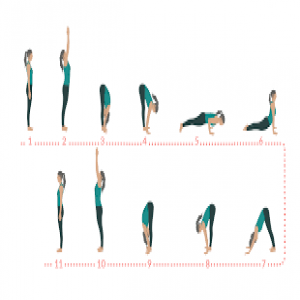
- SAMASTHITI
- URDHVA HASTASANA
- UTANASANA
- URDVAH UTANASANA
- CHATURANGA DANDASANA
- URDVAH MUKHA SVANASANA
- ADHO MUKHA SVANASANA
- URDVAH UTANASANA
- UTANASANA
- URDHVA HASTASANA
- SAMASTHITI
Classical Surya Namaskara B (Hatha Yoga tradition)
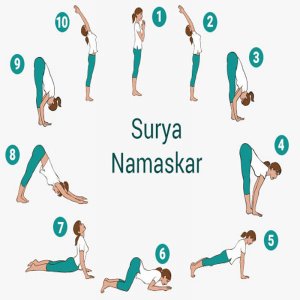
Surya Namaskar B – this is what is explained above.
Comparison
Standing forward bend position: In Classical Surya Namaskara your back is rounded and your knees soft in order to give a slow stretch all over the spine. In Ashtanga Vinyasa Surya Namaskara the back is lengthened and the knees straight.
Stepping back to Plank: In Classical Surya Namaskara we move through a low lunge position with the chest raised, pelvis pushing forward. In Ashtanga Vinyasa Surya Namaskara we hop or quickly step backward.
Lowering to the mat: In Classical Surya Namaskara we move the spine to slowly stretch our thoracic and cervical spine. In Ashtanga Vinyasa Surya Namaskara we lower flat downward.
Downward-Facing Dog: In Classical Surya Namaskara we maintain the feet and hands as far as in plank position and the goal is to bring our chest toward the knees. In Ashtanga Vinyasa Surya Namaskara we shorten the stance to bring the most of the stretch to the back of our legs and glutes.
In the classical version of the practice, the spine moves through a beneficial range of motion through the various steps that allow for its extension and flexion. These 12 steps truly aid in warming up and lubricating the spine for motion in comparison to the modern version of the practice.
What precautions and contraindication should be taken before practicing Surya Namaskar?
There are certain precautions and contraindications you need to take care of while Surya Namaskar :
- Don’t drink or eat immediately before and after performing Surya Namaskar.
- Before doing Surya Namaskar, an adequate warm-up should be done.
- It should be correctly synchronized with breathing.
- If you have any medical issues, please consult your doctor.
- Surya Namaskara should be avoided during the pregnancy and menstrual period.
- It should be done in a peaceful place with fresh air.
- Do practice on a regular basis to help your body get used to the process.
- Do follow the instructions properly to keep the correct body posture.
- Don’t try to hold difficult postures for too long as it could result in an injury.
- Try not to get distracted while performing the Surya Namaskar as it can hinder the results.
- Wear comfortable clothing that allows you to do the Surya Namaskar comfortably and without getting in the way.
- Do not perform it if you’ve had a recent surgery or brain hemorrhage.
- Discontinue doing Surya namaskar if a fever, acute inflammation, rashes, or boils occur due to excess toxins in the body.
- Do not attempt this Surya Namaskar with hernia or intestinal tuberculosis.
- Arthritis: Knee strength plays a key role in the various postures in Surya Namaskar. So those people who has severe osteoarthritis leading to knee pain and stiffness, should take it slow or avoid this exercise.
- Wrist Injury: Injury at the wrist will make the chain difficult as pressure on the wrists in positions like Cobra Pose, Adho Mukha Svanasana, and going downward to Eight Limb Pose would cause more stress and injury to the wrists.
Conclusion
Surya Namaskar is a full package of health advantages, increasing the overall health of the body, mind, and soul. There is no other such yogic exercise that is easier, suitable for all age groups and benefits all the major systems of the body.
Start practicing Surya Namaskar in your exercise routine to boost your overall health and reap all the possible benefits.

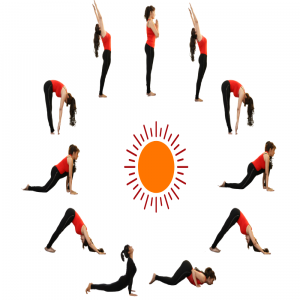
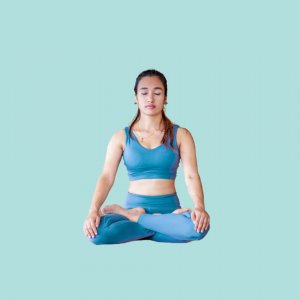
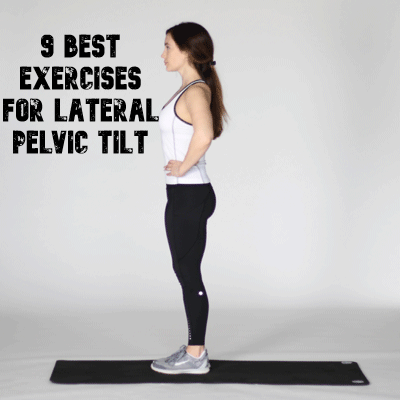
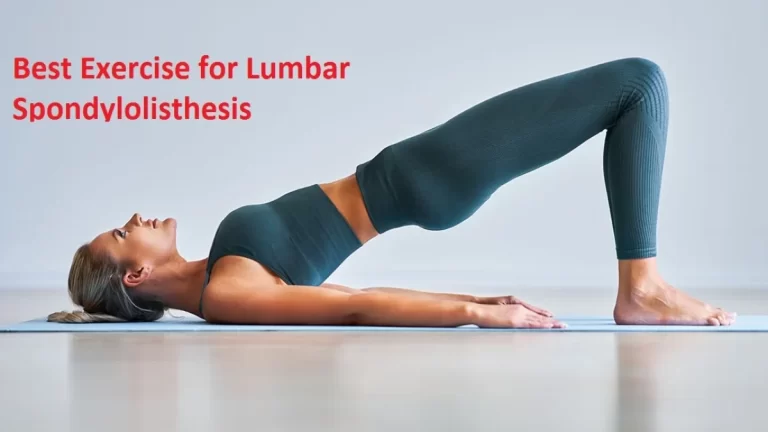

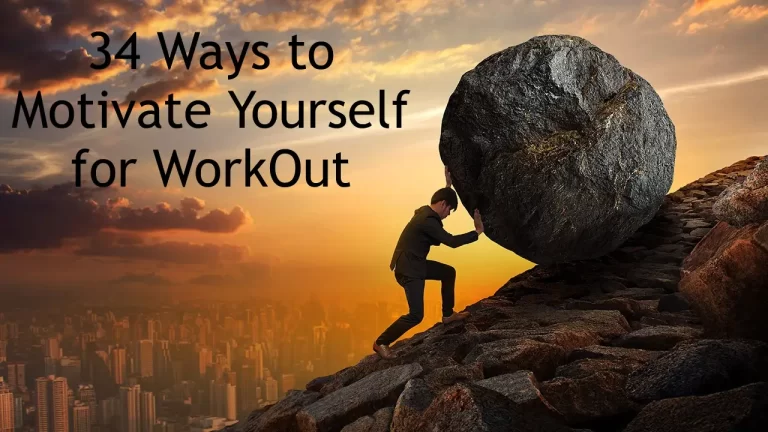
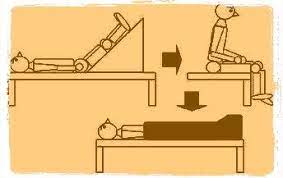
3 Comments